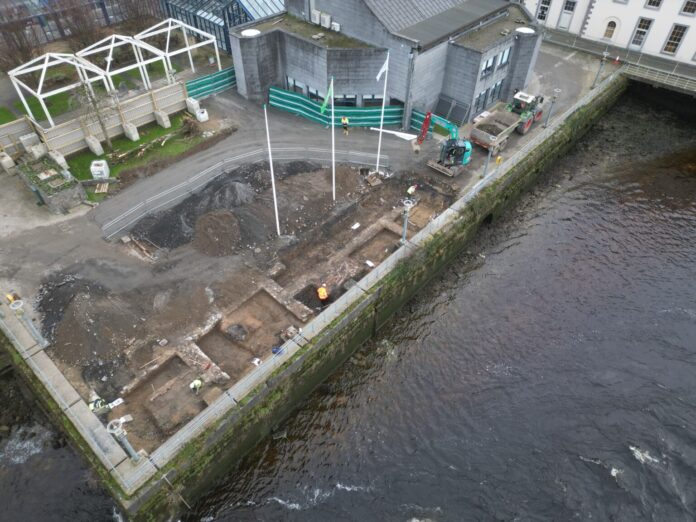
THE grounds of the old Limerick City Gaol in Merchant’s Quay are being excavated at the moment and remnants of the prison’s dark past are coming to light. One such example is the site of a possible treadmill, a machine where several prisoners were forced to walk as a form of hard labour, writes historian Sharon Slater.
The gaol was constructed in 1813, by 1830 it was in full use with petty criminals and debtors in each cell.
That same year, an ingenious escape took place.
It was usual for the inmates to sing the night away to alleviate boredom and lift their spirits while waiting in their cells. On one such evening, in May 1830, among the inmates who joined in the chorus and stomping their feet to the beat were Margaret Clanchy, Mary Hickey, Ellen Hurley, Mary Hurley, Mary King, Margaret Shaughnessy, Bridget Shelton, Catherine Welsh, and Mary Kevin, who had her 11-month-old baby with her.
These women had all been sentenced to transportation for seven years to a penal colony in Australia and were awaiting a transfer to Cork in the coming days.
The 1830s were the height of transportation as punishment, with the vast majority being convicted of petty crimes such as theft. One in seven of those transported were women. Most people were transported for seven years, but would remain in Australia after their release and acquiring a certificate of freedom.
As the sun set, the gaol yards would descend into darkness, without the need for external lights or patrols while the prisoners were safely tucked away behind bars. In the years previous, the military would be posted around the prison but that was removed from the Limerick City Gaol by 1830. Once night fell, the grounds and surrounds of the gaol were a sea of heavy shadows and silence.
On May 15, 1830, a mason was carrying out works in one of the yards and left his ladder behind as he was due back over the next few days to finish his work. Whether through carelessness or quiet complicity, the ladder would soon become a tool of escape.
In the week leading up to the breakout, some of the nine named women acquired a file, aquafortis (acid), and a short iron bar from some of their visitors. Then, under the cover of their usual singing, and with their stamping disguising the noise, two men scaled the prison wall between 9 and 10pm on Sunday 16 May.
Working quickly, the men forced the locks on several cells, their bangs in rhythm with the music as to not reach the ears of the gaol governor or his assistants. Within about an hour, an escape route was made and the two men, nine women, and a baby began their dash for freedom, skirting through the corridors to avoid detection.
One at a time they rapidly mounted the wall confining the women’s ward and sat perched in a row on the summit while the mason’s ladder was being drawn over and laid down against the other side. From there, they slipped away into the night.
The prisoners who remained behind stopped their singing and settled in for the night. Next morning they were woken with a start, as it was only then it was discovered what had happened. Only two or three of the remaining inmates revealed to the guards the events of the previous night, kicking off a manhunt.
Mary Hickey was the first to be recaptured and was taken within a few hours from the Abbey area of the city, not far from the gaol. Margaret Clanchy, having evaded authorities for 48 hours, was next to be caught in John’s Gate.
Two of the women were apprehended at a fair in Tipperary about two weeks later by Constable Cleary of Caher Police, who recognised them from a description in the Hue and Cry police magazine. One of these women was Bridget Shelton, alias Arthur, who admitted to further petty robberies after her escape.
Catherine Welsh was the sixth of the prisoners found. She had been in hiding in Gort during the first week of June 1830, where she was arrested for shoplifting. While a form was being filled out to send her to Galway gaol, she broke her silence admitting that she was one of the escaped from Limerick and there was “no occasion for sending her so far into the heart of Connaught”.
She was sent to a penal colony, and her husband John Welsh, a cordwainer from Limerick City, petitioned for himself and their three children to join Catherine in Australia.
Margaret Shaughnessy was eventually recaptured and transported to Australia in 1831. Her crime was pawning stolen clothes.
Three of the prisoners – excluding the fugitive baby, who was never mentioned again – remained at large, or at least without notice of their recapture in the local newspapers.


